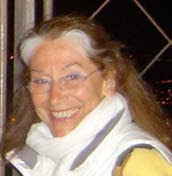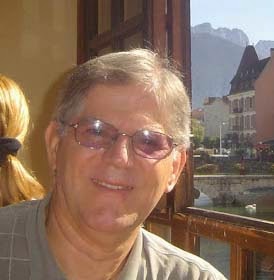by Tom Kando
Deadwood was a weekly Western on HBO from 2004 to 2006. Its thirty-six episodes are still available on demand at this time. I now offer a belated exposition of this amazing show, all the while trying to mimic its linguistic style:
One of the production’s highly entertaining facets is the scribes’ efforts to render the actors’ locutions and axioms as veritable as possible to the prevailing linguistic discourse of the epoch and the locale in question - namely the Wild West of the 1870s. The consequence is a consummate admixture of disproportionate profanity blended with esoteric and convoluted speechifaction such as what you, dear reader, are experiencing whilst reading the present phrase.
I cannot gauge whether the featured linguistic style veritably reflects reality and the prevailing nomenclature of that era, as I was not present, but it is most engaging. As to the ubiquitous use of obscenities by the protagonists, I shall revisit this affair in a moment.
The reviews of Deadwood were unanimously rave. Consult for example IMDb and Rotten Tomatoes. It garnered multiple Emmy and Golden Globe awards. It has been designated “the greatest TV show ever.”
I do not acquiesce in such hyperbole, but I do assign Deadwood a high rating. Each installment’s conclusion is poignant, as is the music.
The series portrays the savage, venal, lawless, anarchic, perilous and chaotic existence in the no-man’s land which South Dakota was during the 1870s, in the aftermath of Colonel Custer’s undoing at the battle of Little Bighorn.
Speaking concisely, Deadwood is a hell hole. It is a lawless camp to which malfeasants and renegades flock in search of gold and riches, driven by cupidity and rapacity. Women are vilely oppressed. The value of a prostitute’s life is less than that of a horse. The underclass finds repose in opiates and other narcotics. Murder and butchery are quotidian. There are many villains and few heroes. Most people’s domiciles, vestments and repasts are rudimentary. Reading and ciphering skills are sparse. Many toil under deadly maladies.
The premier personage in this captivating narration is a Swearengen, most capably enacted by the Irelander Ian McShane. This personage is the camp’s “boss.” Other preeminent figures from the firmament of history include the august Wild Bill Hickok ( one of the few virtuous personas) and Calamity Jane - a peregrinating and yet endearing alcoholic. We also encounter George Hearst, the progenitor of newspaper tycoon William Randolph. George is a nefarious individual who commissions a multitude of murders. To appeal him is to summon trouble.
The composition of the camp’s populace is worthy of remark: Naturally, the juncture being 1876, most people are of European vintage. For example, there are numerous “Cornish” mine workers.
Equally well represented is the Chinese race. A sprinkling of Negroes and a Jew ensure that the diversity of Deadwood is well explicated on the whole.
There is, however, a perplexing lacuna: No autochthonous Amerindians appear anywhere in the narrative. This absence is puzzling, in light of the epoch and the locale which are portrayed.
Now let me revisit the concern of profanities: The frequency of uttered obscenities by the protagonists seems incalculable. Two locutions are used with abandon: “fuck” (and its derivatives) and “cocksucker.” It has been deemed that the word “fuck” arises about three thousand times in this production, which is tantamount to 1.56 times per minute lapsed.
The rationale for this, so the miniseries’ scribes aver, was to replicate for the audience the stridulent ambience of the epoch. However, it is my assessment that the hyperbolic usage of blasphemous language depreciates the narrative and diverts us from it.
Not everyone in Deadwood is a miscreant. For example, Sheriff Seth Bullock, ably staged by Tim Olyphant, valiantly endeavors to uphold the rule of law, through valor and sagacity.
Yet one poses in vain any parallel between this miniseries and the classic The Man who Shot Liberty Valance,(1962). That picture’s maxim was the transformation of the lawless frontier into civilized society. The difference reflects two contrasting Zeitgeists: half a century ago, optimism reigned, as did our faith in the ultimate triumph of civilization. Today, we are ruled by trepidation about the future and about our ability to root out evil.
© Tom Kando 2015
leave comment here
Youtube
Contact Form
Popular Posts
-
By Madeleine Kando Flying is like signing away your rights as a human being. Not only is your life put on hold, but you never know which sid...
-
By Tom Kando Only one thing aggravates me more than the mistakes of the electorate - as exemplified by the Democratic loss in Massachusett...
-
by Madeleine Kando We left Boston early Sunday morning, the day before the 2024 Solar Eclipse. We have friends who live close to the Canadia...
-
Tom Kando Some societies are more successful than others. Today, there are successful societies such as Australia, Canada and Scandinavia,...
Tom's Publications and Essays
Madeleine's Publications and Essays
interesting links
Publish Your Article!
A valid author name is required. We will create live links to url's that you specify in your post. Please be patient, and allow us some time to read and approve your article.We reserve the right to refuse any articles that are not deemed appropriate for this blog.








